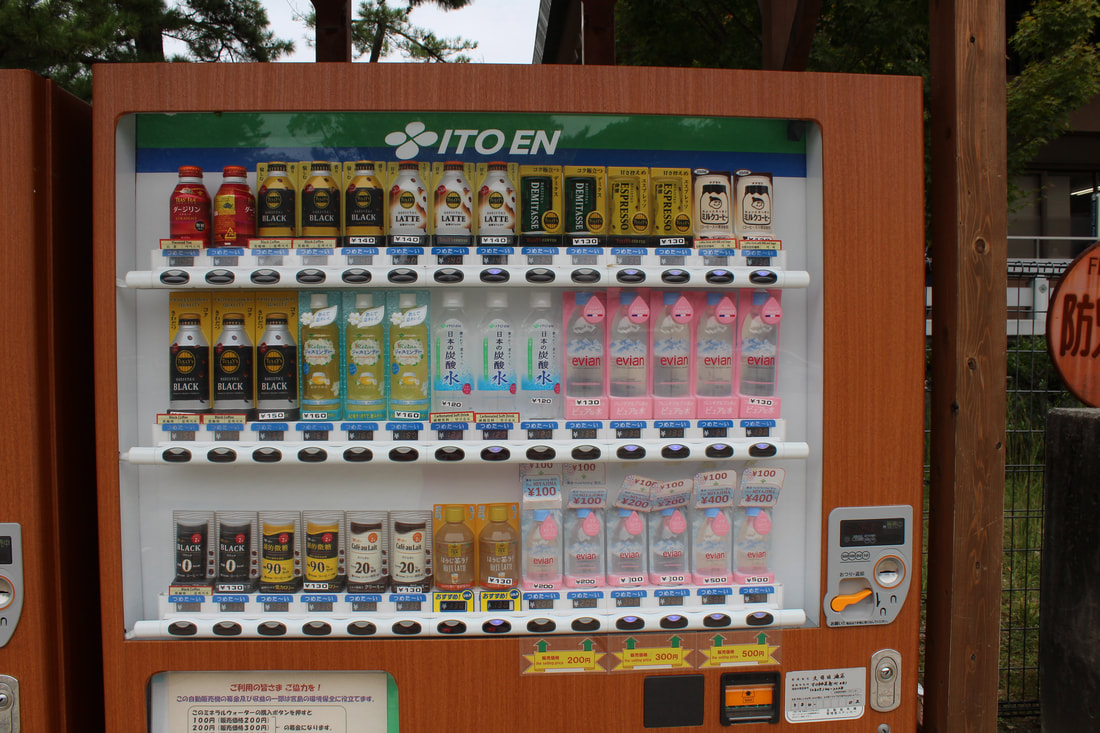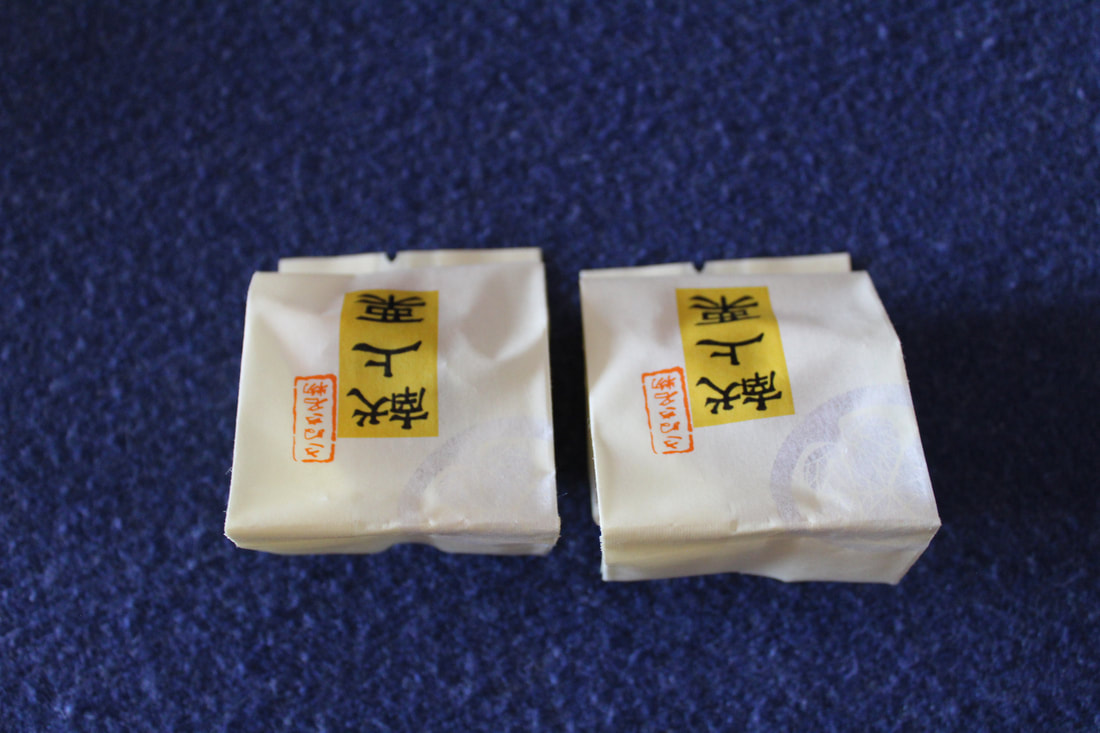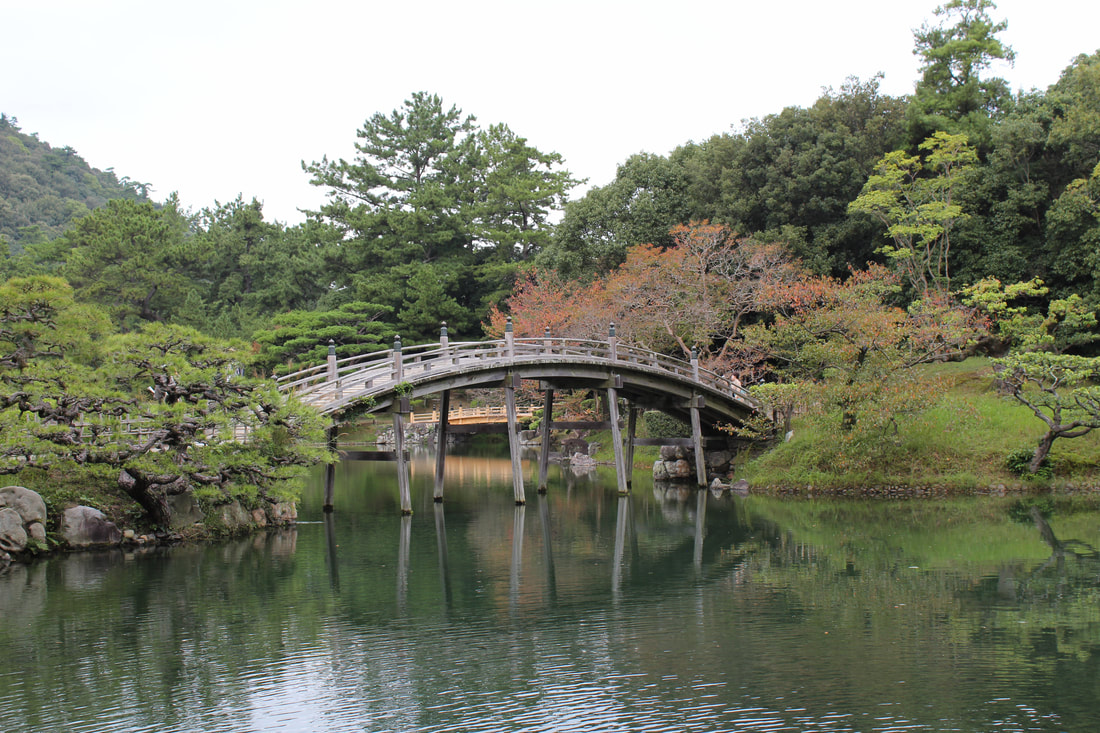|
I would love to be the kind of person who could succinctly summarize a trip. When I travel, I seem to notice small things that are often unrelated to anything. Eyes wide open is not a bad thing...except when you try to write a blog :) So, in no particular order, here are my random reflections from my time in Japan. Japan is such a beautiful, clean and organized country. It is a strange contradiction that there are almost no trash cans (it seriously takes some searching to find one…), but there is also almost no trash. However, there are just about as many vending machines in Japan as people. Ok, slight exaggeration, but it is something close to 1 vending machines for every 23 people!! In said vending machines are plastic bottles and cans---much like we have in the States. There is also lots of packaging for food and snacks and when you check out of a store, you are also given a plastic shopping bag. Sounds like America. Then why do the Japanese manage to keep such a clean, pristine environment…..while American has litter nearly everywhere you look. I don’t have the answer, but it puzzles me, so I thought I would put the thought out there. Presentation is also an important component of Japanese society. Serving plates are artfully displayed and each item has its place (for example, a special small ceramic bowl for a block of sesame tofu...see my previous post about food). I’m not talking about 5 star restaurants…this is everywhere. Nice touches that make everything feel intentional (and beautiful). The photo below is of a piece of a chestnut candy. Less than $1 in a store and it looks like the fanciest piece of candy I've ever eaten (well, outside of maybe France...) I found the Japanese people to be very gracious and friendly. These chestnut candies were a gift at one of the ports we docked. There was an accompanying letter welcoming us and placed in our stateroom. I understand this was a small port that doesn't see many cruise visitors---so it isn't like they do this every day---but it felt genuine and was much appreciated. Each guide we had welcomed us off the ship like we were family. They were excited to share their culture and knowledge and took pride in Japan when we complimented something (architecture, food, cleanliness of the vehicles). All of our guides gave us a small token of appreciation. For example, an origami of a shirt with a few toothpicks inside or a paper crane for peace. In Takamatsu (one of the ports), the tourist office offered a bowl of their famous Udon soup. They offered this to everyone on board the ship---for free. Just for stopping by and seeing their city. The friendliness continued once we were off the ship. My husband and I took the train to Kyoto….we accidentally got on a local vs fast train and at one point there was a long message over the loud speaker in Japanese (it was rare to have announcements in English) and the fellow travelers were talking amongst themselves. Having blonde hair, I stuck out like a sore thumb. A random passenger turned to us and asked (in broken English) if we were going to Kyoto. When we said yes, she said there was some sort of signal problem and we had to get off the train. She basically said follow me. We would have NEVER been able to figure out what was going on without her and while we would have asked a train employee once we got off the train, we would have been delayed. The kind stranger took us efficiently to the next train with about a minute to spare before it left….probably saving us 30 minutes or more. On the return from Kyoto, I was looking at a map to make sure we were getting on the correct train back and within seconds, someone came over to offer help. He confirmed we were getting on the correct train and instructed us to wait in one of the lines to board. Super helpful. I’m not saying Americans aren’t helpful, but I’m not sure we (I) would be so fast to offer help (without being asked) to a stranger in our country. Something else to ponder... We were traveling with a few other people and we started to play a game to try and find a dirty car in Japan. I don't mean a clunker/junker...those we didn't see....I'm talking about a nice Toyota with pollen or dirt or something on it. We searched everywhere and I think we found one :) This was even after a rain. Many drivers wear white gloves (more so private hired drivers than taxi drivers) and the interior and exteriors of cars are immaculate. There is white lace along the seat backs and door trims that gives everything a pulled together look. Many of the taxis are what we would call “vintage cars” to be nice….perhaps from the 1970’s or 80’s, but the inside looks brand new. The care given to maintain that level of cleanliness must be immense. The ferries and trains we took were also very clean. Not sure if it is pride in ownership or an unspoken cultural rule or something else. Japan seemed very safe to me, so it surprised me in one spot (a Zen garden nonetheless) when someone suggested we put our shoes in a plastic bag instead of placing them on the shoe racks (you have to take your shoes off before entering) as to avoid the theft of our shoes. This was in a more touristy area, so perhaps that is where there was some concern?? Or perhaps this is a thing?? Again, a random observation.... One crime related note---Yakuza or organized crime in Japan is a concern. They are known for having tattoos and that is one way they advertise their affiliation. Well, my husband and I like to go to thermal baths and Japan is known for them. However, I learned quickly, that if you have a tattoo, you are not allowed in. No exceptions. This is true in other Asian countries as well as I learned in South Korea. Let me be clear, I have a colorful sun god tattoo on my shoulder---not violent or offensive by any stretch. However, the content of the tattoo has no bearing on the decision. I was surprised to find out this restriction even applied at the hotel spa at the Hyatt in Osaka. The spa is operated by an outside company and locals can purchase a membership, but I was still surprised by the sign at the spa desk. I think I could have swum in the pool, but I decided not to try (I think the restriction was for the sauna and relaxation areas). On a not crime related note (or perhaps part of that conversation...), we learned that there is not much religious diversity in Japan. The vast majority of the population is either Shinto and/or Buddhist. The and/or part is significant as it is allowed/accepted/normal to practice both religions. The Shinto shines are typically used to celebrate events of the living---births, weddings and other celebrations while Buddhist temples are typically used when someone dies. The signature of a Shinto shire is the Torii (sometimes called Otorii) Gate. This is the entrance to the Shinto Shirne and marks the transition from the mundane to the sacred. Meaning once you step through the gate you have entered another space and will practice ceremonies to purify and pray. Overly simplified, but that is the overall concept. I will stop for now. More from the trip to come in future blog posts....
1 Comment
caryl steinberg
10/16/2018 06:53:03 pm
Tracey...Love your blog. Our hotel in Kyoto allowed you in their spa if you had a small tattoo that could be covered by two strips.
Reply
Leave a Reply. |
AuthorTracey is the owner of Unraveled Travel and has traveled to every continent (thanks to the recent visit to Antarctica! Archives
July 2024
Categories |



 RSS Feed
RSS Feed